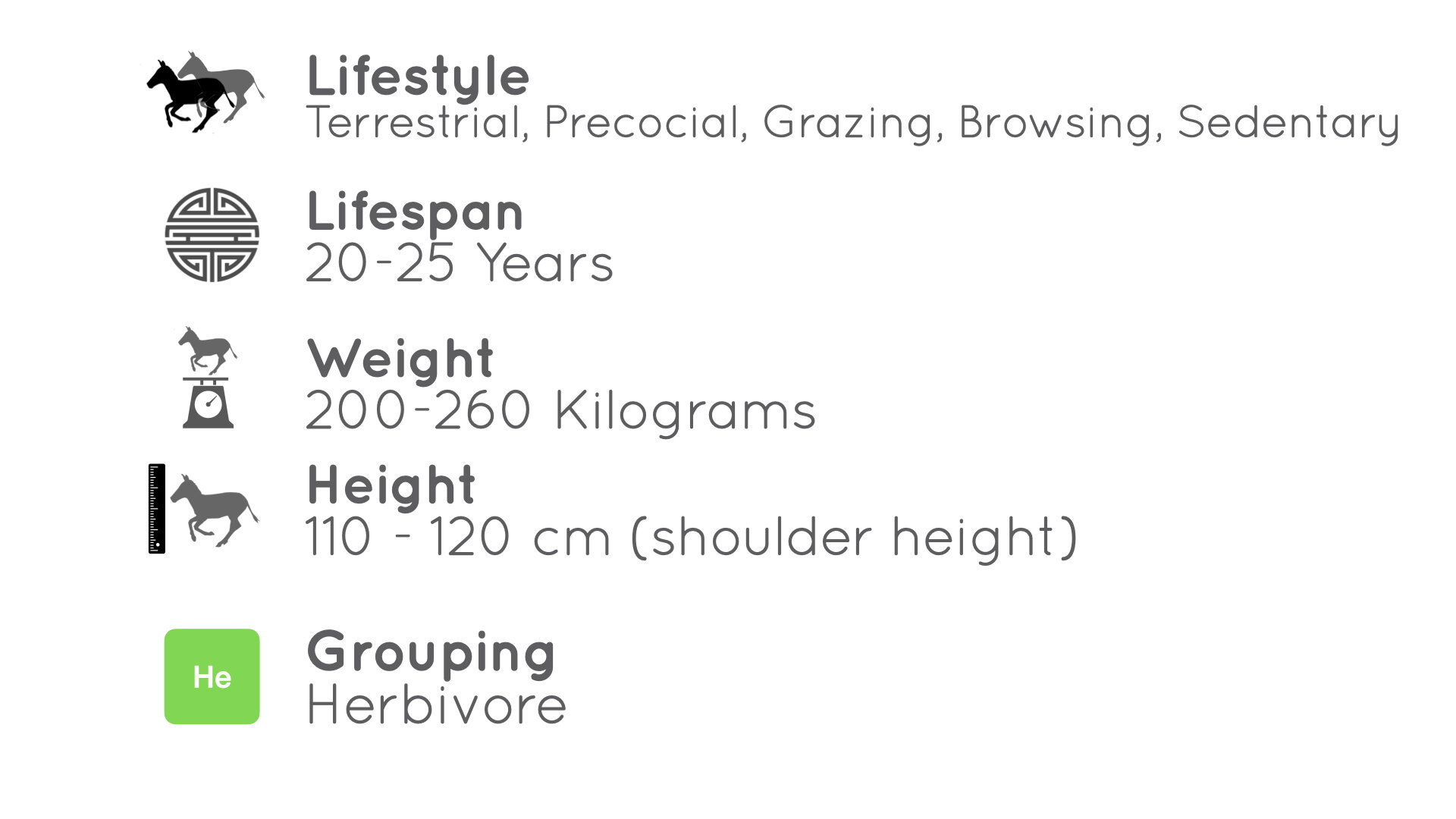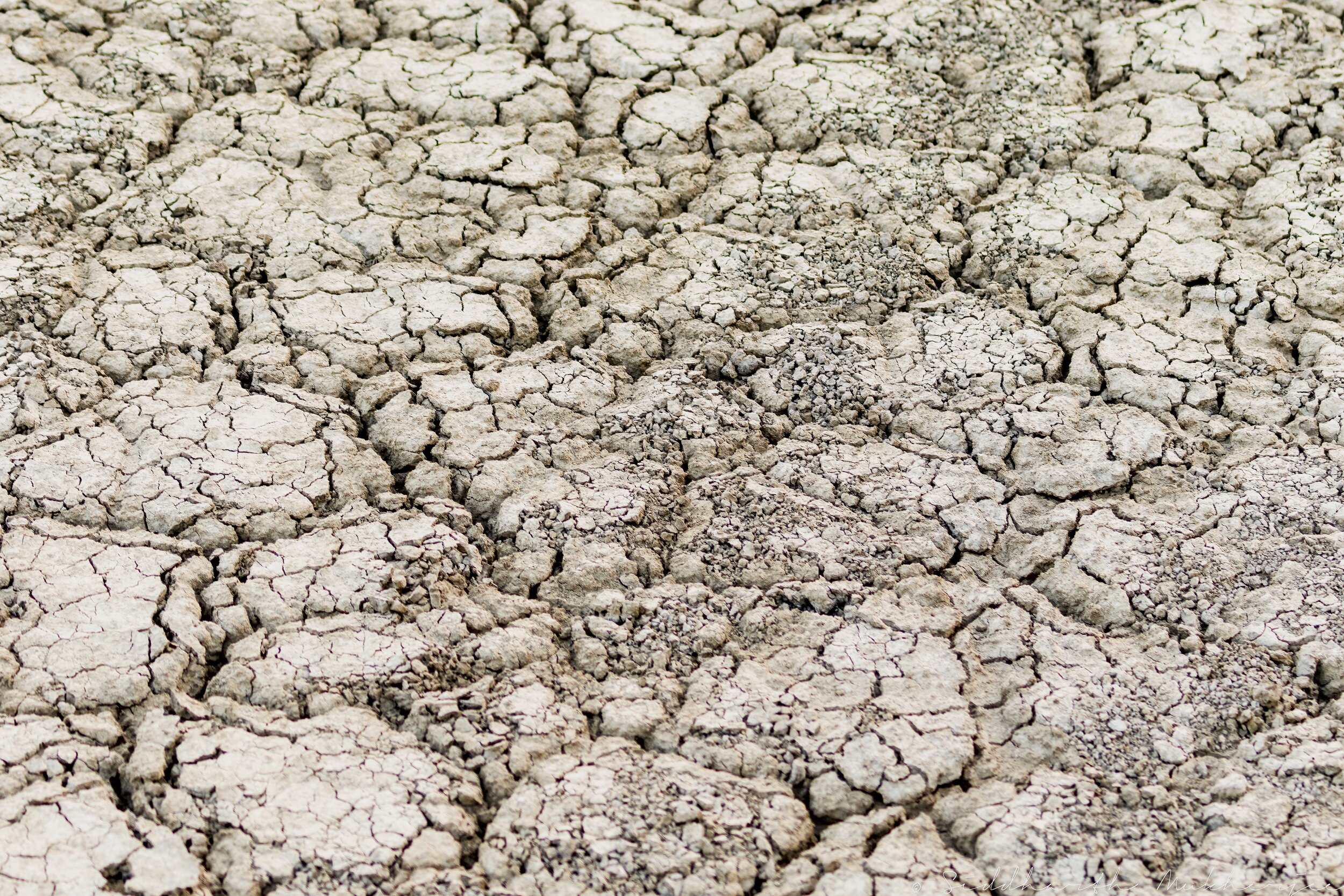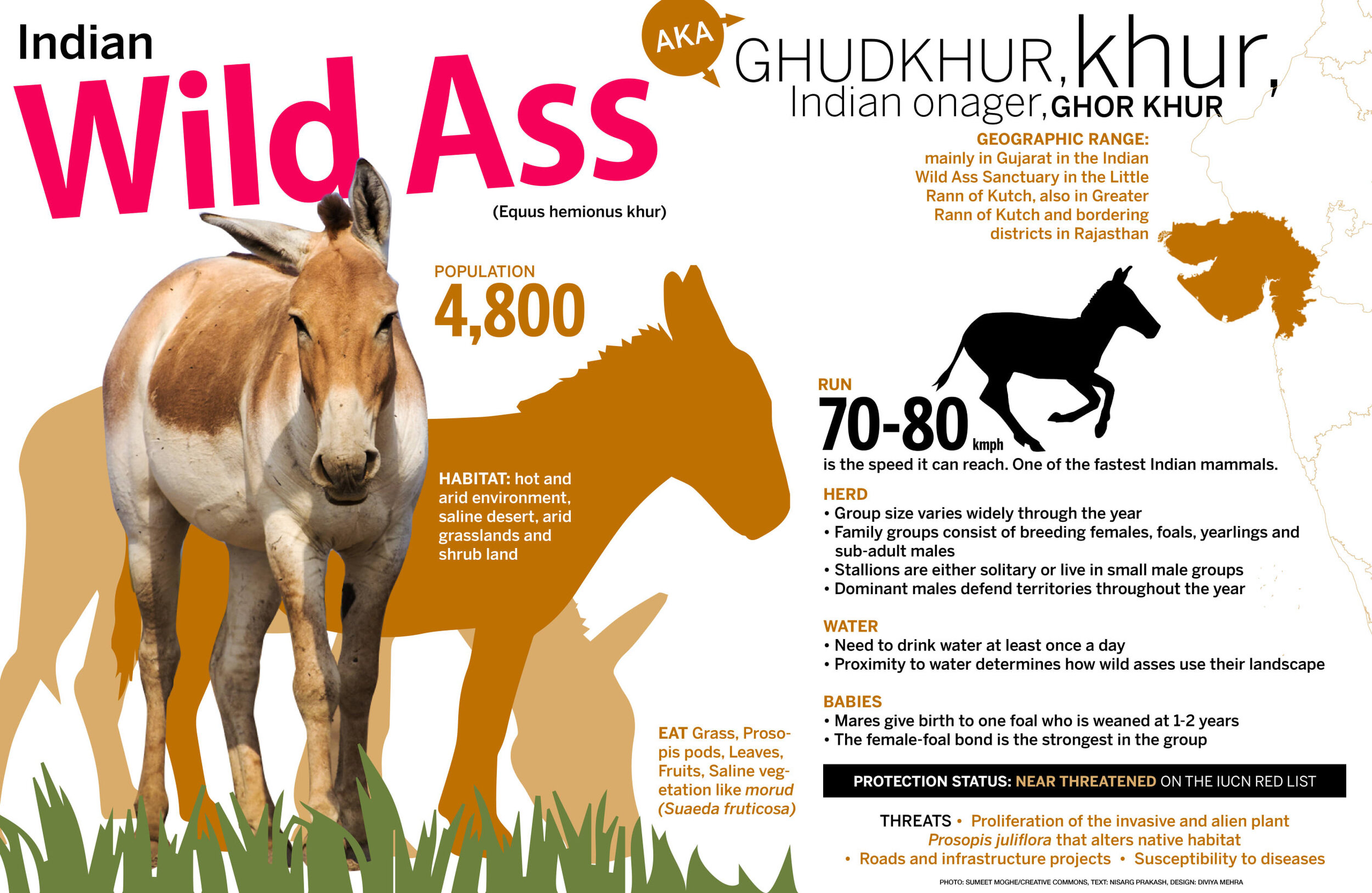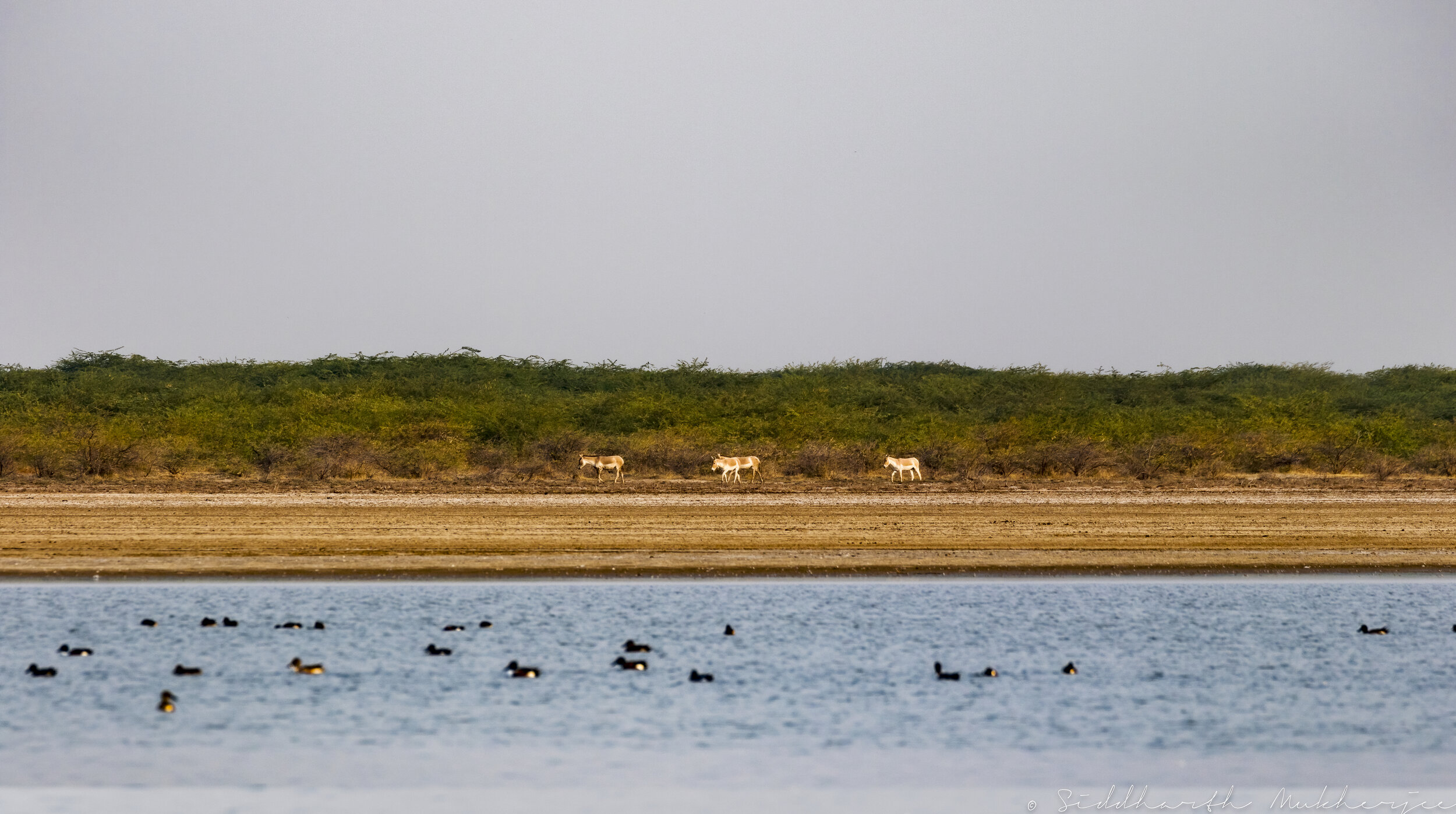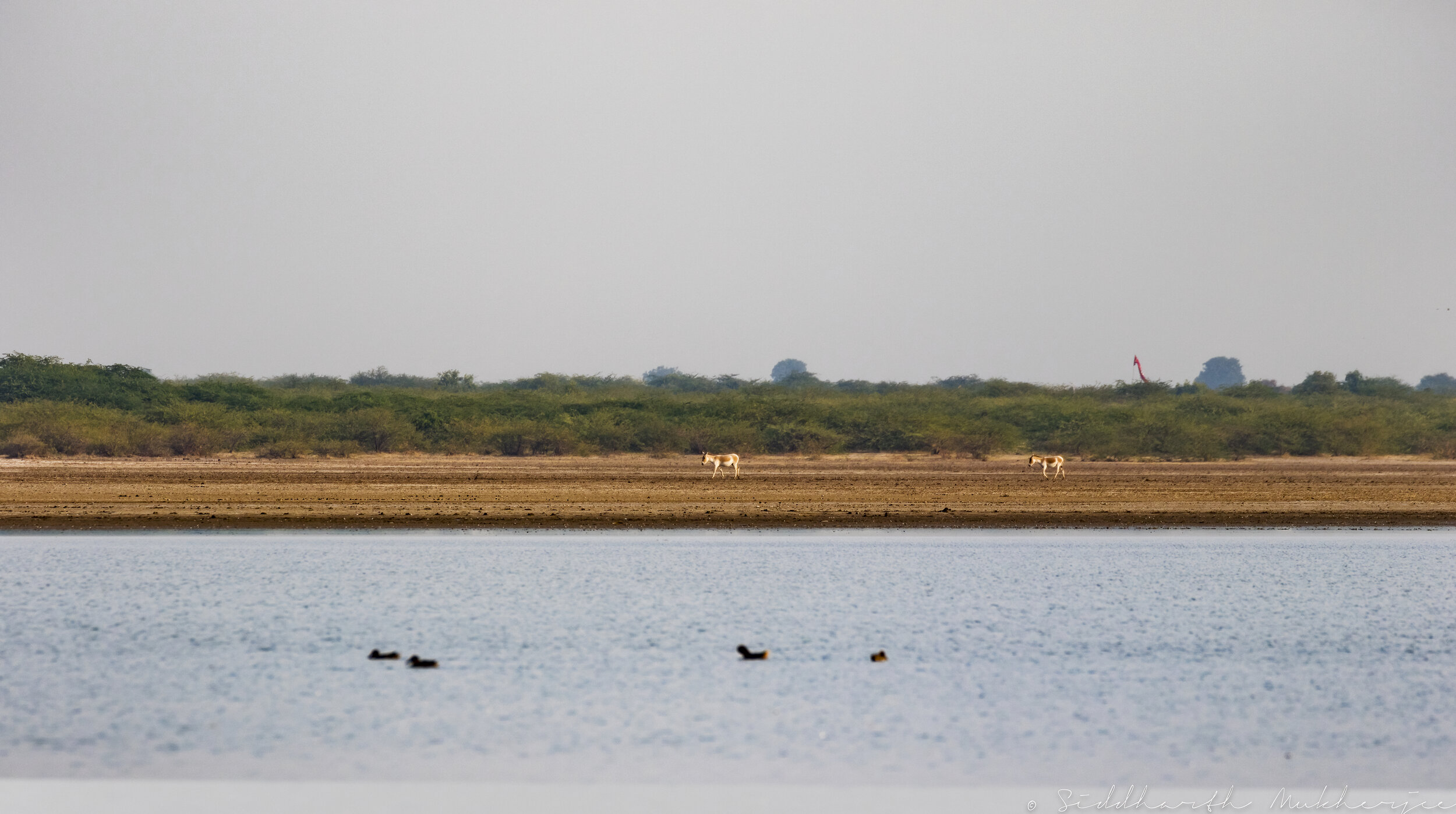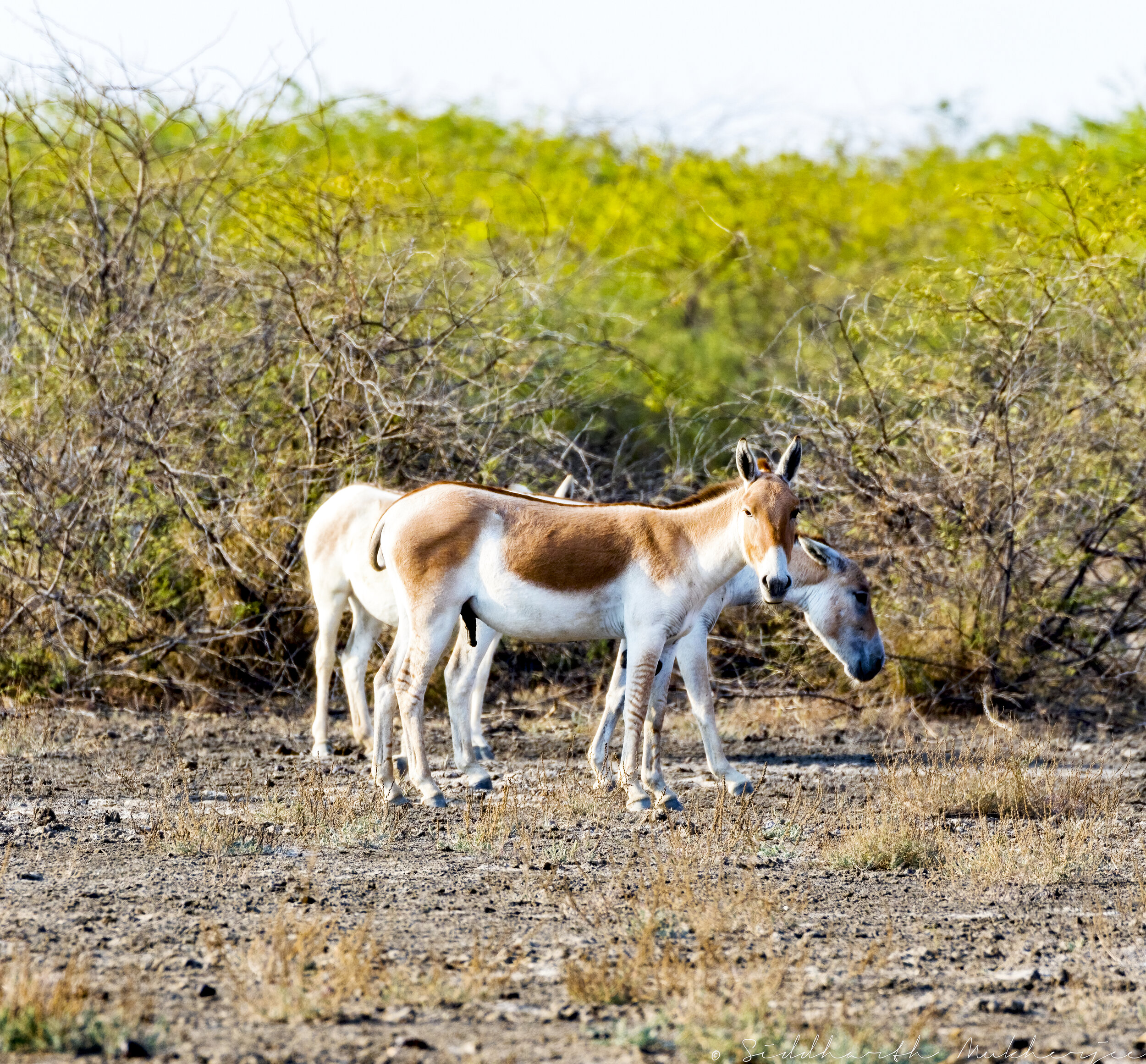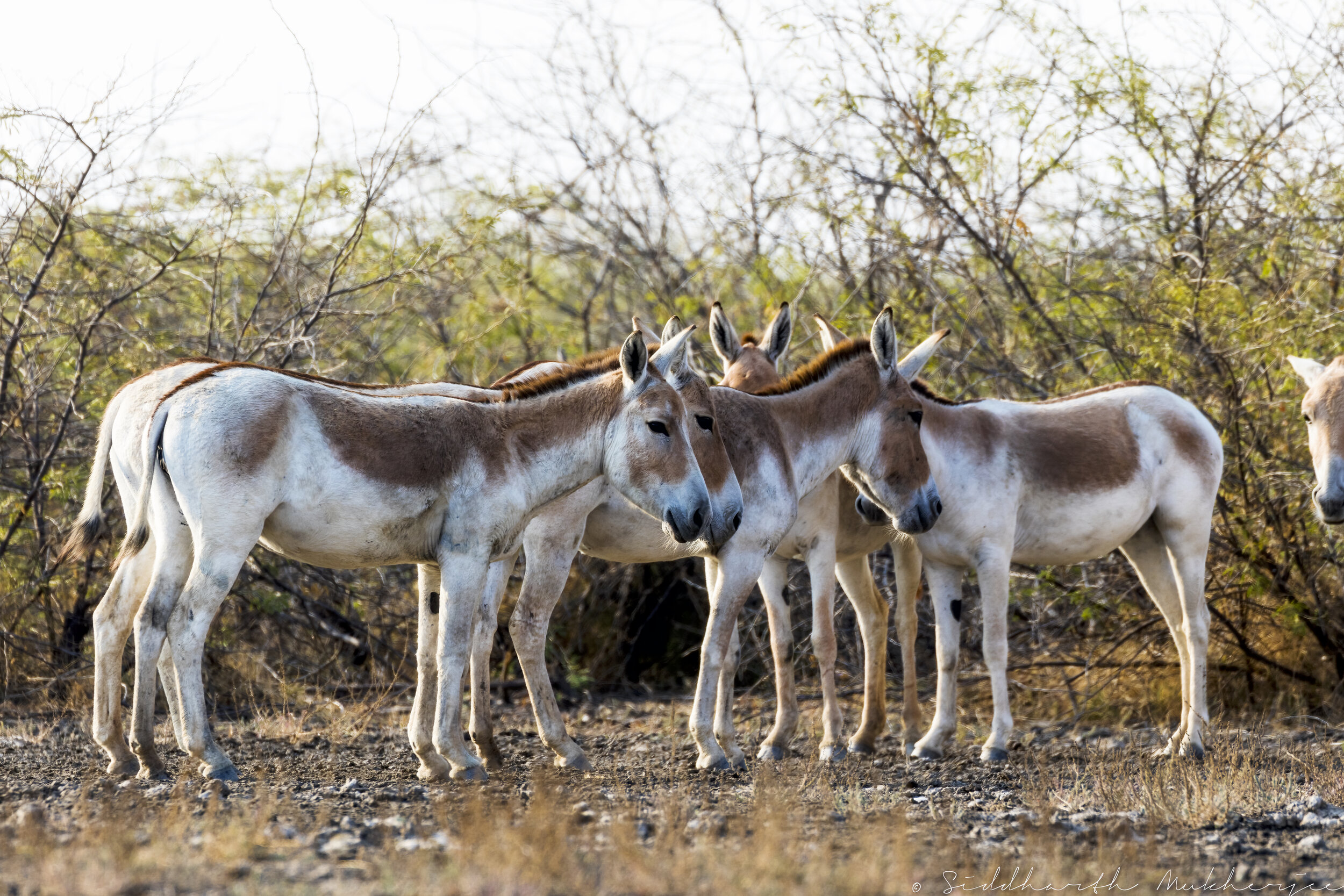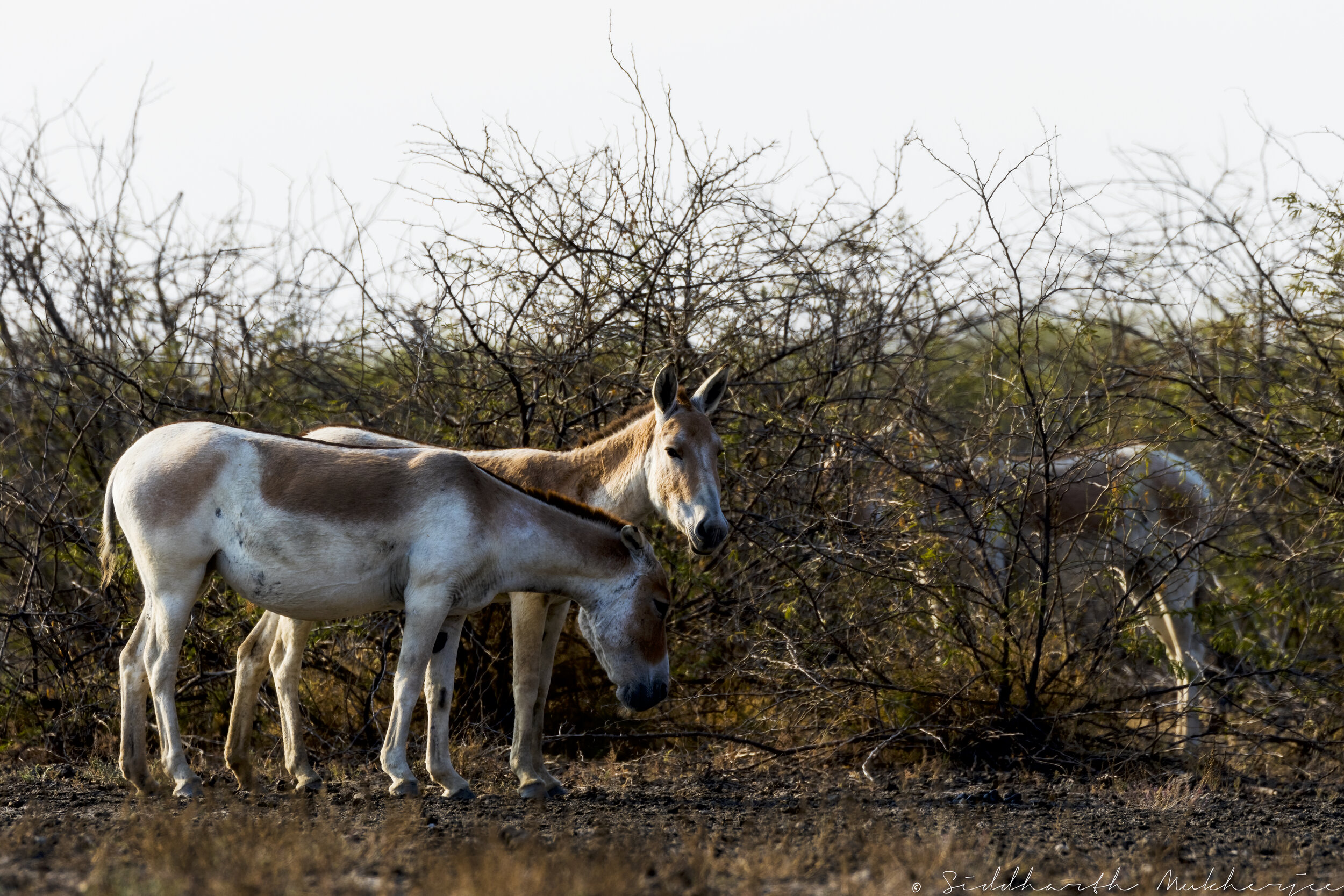Khur - The Indian Wild Ass
Equus hemionus khur
NEAR THREATENED
Little Rann of Kutch
The Indian Wild Ass (Equus hemionus khur), also known as the Indian Onager and called the Ghudkhur, Khur in the local Gujarati language, is a subspecies of the onager native to Southern Asia. It is currently listed as Near Threatened by IUCN. Per the census conducted in March 2020 the population has reached 6,082. The data was released on 4th August 2020. The last Indian wild ass census was carried out in 2014 and the population then stood at 4,451.
The Indian state of Gujarat, the world's only abode of Asiatic lions, is also the only place one can see one of the fastest land mammals, the Indian Wild Ass. The Indian Wild Ass Sanctuary also known as the Wild Ass Wildlife Sanctuary, spread over an area of 4954 km², is located in the Little Rann of Kutch in Gujarat. The wildlife sanctuary was established in 1972 and came under the Wildlife Protection Act of 1972. The sanctuary is one of the last places on earth where the endangered wild ass sub-species Indian Wild Ass (Khur) (Equus hemionus khur) belonging to Asiatic Wild Ass species Onager (Equus hemionus) can be spotted.
The Indian wild ass, as with most other Asian wild ass subspecies, is quite different from the African wild ass species. The coat is usually sandy, but varies from reddish grey, fawn, to pale chestnut. The animal possesses an erect, dark mane which runs from the back of the head and along the neck. The mane is then followed by a dark brown stripe running along the back, to the root of the tail.
Its range once extended from western India, southern Pakistan, Afghanistan, and south-eastern Iran. But today, its last refuge lies in the Indian Wild Ass Sanctuary in the Little Rann of Kutch and its surrounding areas of the Great Rann of Kutch. The animal, however, is also seen in the other Kutch districts of Surendranagar, Banaskantha, Mehsana, and others. The saline deserts (rann), arid grasslands and shrublands are its preferred habitats.
The Indian wild ass population has been increasing in numbers and gradually extending its range, from the sanctuary in the Little Rann of Kutch, moving out and colonising the Greater Rann of Kutch, also extending into the neighbouring state of Rajasthan bordering the Rann of Kutch where a 60km² area was transferred to the Rajasthan Forest Department in 2007.
This area is known for the ethnic group of people - the Rabaris - camel and sheep breeders and herders, who live in these thorny shrub jungles of vilayati babul, an invasive weed. These shrub jungles are also home to wildlife like chinkaras, striped hyenas, red foxes, desert cats and Indian wolves, etc. There is an interesting origin story about the Rabari which says that Lord Shiva put them on earth to tend to the camels owned by Parvati.
Indian Wild Ass: Facts, Habitats, Threats (Source: Roundglass | Sustain)
While researching I came across this beautiful infographic by the Roundglass Sustain team on the Wild Ass. It is a comprehensive summary of the animal at a glance. The Indian Wild Ass grazes through the day between dawn and dusk feeding on grass, leaves and fruits of plant, crop and saline vegetation. It also feeds on the pods of the vilayati babul shrub found in abundance in the Rann.
This invasive babul tree is the Prosopis juliflora native to Peru, Chile and Argentina. It has been introduced in Asia and Africa and is now wide spread in the semi arid areas of the world. In many areas, it is considered a weed. It is a drought resistant deciduous thorny shrub or small tree up to 12 m tall and has been planted in dry areas of the country. The babul pods are greatly relished by livestock and wildlife equally.
The Indian Wild Ass is one of the fastest of Indian animals, with speeds clocked at about 70 – 80 km. per hour and can easily outrun a jeep. We saw the herd take off from us after they had grazed.
Stallions live either solitarily, or in small groups of twos and threes while family herds remain large. The rainy season is their mating season and when a mare comes into heat, she separates from the herd with a stallion who battles rivals for her. After few days, the pair returns to the herd. The mare gives birth to one foal. The male foal weans away by 1–2 years of age, while the female continues to stay with the family herd.
Indian Wild Ass Range
The Threats
In the last century, the Indian Wild Ass lived all over the dry regions of northwestern India and western Pakistan including Jaisalmer, Bikaner, Sind and Baluchistan. Today, it survives only in the Little Rann, and a few stray towards the Great Rann with some reaching the bordering villages of neighbouring Rajasthan. By the year 1960, the number of Wild Asses fell to just 362, it was then classified as a highly endangered species. In the years 1973 & 1976, the Rann of Kutch and adjoining districts were taken up as the area for conservation for this sub-species also known as Khur. From 1976, the forest department began conducting the wild ass census. Water holes were increased in the area, the forest department has also started a project for having fodder plots though the forest department is yet to get desired success.
The Indian Wild Ass was never a hunting target for the Maharajas & the colonial officials of the British Raj. It was, however, hunted during the Mughal period with mentions in Emperor Jahangir’s book Tuzk-e-Jahangiri, and in an illustrated copy of the Akbarnama where the Emperor Akbar is pictured on a wild ass shoot. But beyond that there is no evidence as to why the Indian Wild Ass disappeared from its former haunts in western India & Pakistan.
From 1958-1960, the wild ass became a victim of a disease known as surra, caused by Trypanosoma evansi and transmitted by flies, which caused a dramatic decline of its population in India. In November and December 1961, the wild ass population was reduced to just 870 after the outbreak of South African Horse Sickness. Besides disease, the ass's other threats include habitat degradation due to salt activities, the invasion of the Prosopis juliflora shrub, and encroachment and grazing by the Maldhari. Conservation efforts since 1969 have helped boost the animal's population to more than 6000 individuals per the last census.
Of late, it has been spotted in multiple locations outside the Wild Ass Sanctuary and it seems it is no longer confined to the 4,953.71 km² area of the Rann. It is now being found right up to the Kala Dungar near Banni grasslands in Kutch and Nal Sarovar. Within the State of Gujarat it is now also found in districts of Surendranagar, Rajkot, Patan, Banaskantha and Kutch. This population of wild asses is the only gene pool of Indian wild asses in the entire world and one of the six geographical varieties or sub-species surviving on the planet. The others are:
Mongolian wild ass (khulan), Equus hemionus hemionus
Turkmenian kulan, Equus hemionus kulan
Persian onager, Equus hemionus onager
Syrian wild ass or hemippe, Equus hemionus hemippus (extinct)
There is also the Kiang or Tibetan wild ass which, hopefully, I will see and photograph someday.
‡‡‡‡‡
With that said these are some photos from the time I spent with the Wild Ass in the Little Rann of Kutch starting with a drive into the Rann as the sun rose behind us. This was one instance when I was able to go to ground and sit a few meters away from the animals as they grazed. There were two herds - one which approached to within a few meters and one that stayed behind the vilayati babul at a distance.
Related Posts



